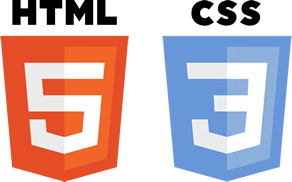
You may not know this, but the Americans with Disabilities Act (ADA) applies not only to physical space, but also cyberspace. That means if your website isn’t accessible, you could be held liable, aka sued (yikes!). Plus, considering one in four Americans are living with a disability, it makes good business sense to ensure your website is accessible. On top of that, accessibility and search engine optimization (SEO) go hand in hand. Accessibility is a win all around.
The ADA doesn’t have any guidelines specifically for websites and mobile applications because hi, it was written before the internet was a thing, so instead web developers, like your favorite Charlotte web developer, Web Symphonies, refer to the Web Content Accessibility Guidelines (WCAG).
What does it take to be WCAG compliant? Keep reading.
Make it Perceivable
The first principle of WCAG compliance is “perceivable,” which means all the information on the website – text, links, buttons – must be presented in such a way that users can perceive them. For instance, how’s your use of color? WCAG suggests the color contrast be 4.5:1 or higher. That means black text on a white background is fine because the color contrast is so high. But pale-yellow text on a white background won’t pass muster because the contrast isn’t high enough. I REALLY wanted to write “pass mustard” there to go along with the “yellow” association but I didn’t. You’re welcome.
Making your website perceivable also has to do with whether the CSS allows both the landscape and portrait orientation, as another example. Not sure if your website is capable of that? Contact us, your favorite Charlotte web designer, for help.
Be Operable
Another WCAG principle involve operation. Can all your users interact with it … successfully? If there are interactive components can everyone operate those components? For instance, while using a keyboard the visitor doesn’t need specific timings for individual keystrokes. Or another example, web pages don’t contain anything that flashes more than three times in any one second period because of, you know, seizures.
Get It?
The third principle is understanding. That means not only the text itself (hi writing for a general audience with a lower secondary education reading level), but also the website. Pages appear and operate in predictable ways and users are protected against input errors that cause legal commitments or financial transactions. (Ain’t no one wants to sign up for a life-long membership accidentally.)
Being “understandable” also could mean including visual illustrations, pictures, and symbols to explain ideas, events, and processes.
Be Robust
I tried to think of a fun/interesting way to present WCAG’s fourth principle, robust, but I failed because the word is both specific and vague at the same time. Web browsers and assistive technologies like screen readers must be able to access the website now and as the technologies evolve. That also includes things like putting your heading ranks in the right order. Don’t start with a fourth-level heading (<h4>) and then jump to a second-level heading (<h2>) because h2 is bigger in size than h4. That can be confusing. Why is your text small and then big? Assistive technologies could get all jumbled.
To be honest though, this section in particular requires a web developer in Charlotte because the guidelines say things like, “In content implemented using markup languages, elements have complete start and end tags, elements are nested according to their specifications, elements do not contain duplicate attributes, and any IDs are unique, except where the specifications allow these features.”
What does that even mean? I don’t really know, which is why I’m the resident writer, not the resident web designer. To get help with making your website accessible, reach out to Web Symphonies. We’re happy to help.
Contact us online or call us at (704) 336-9113 to learn how our website accessible can help you!



